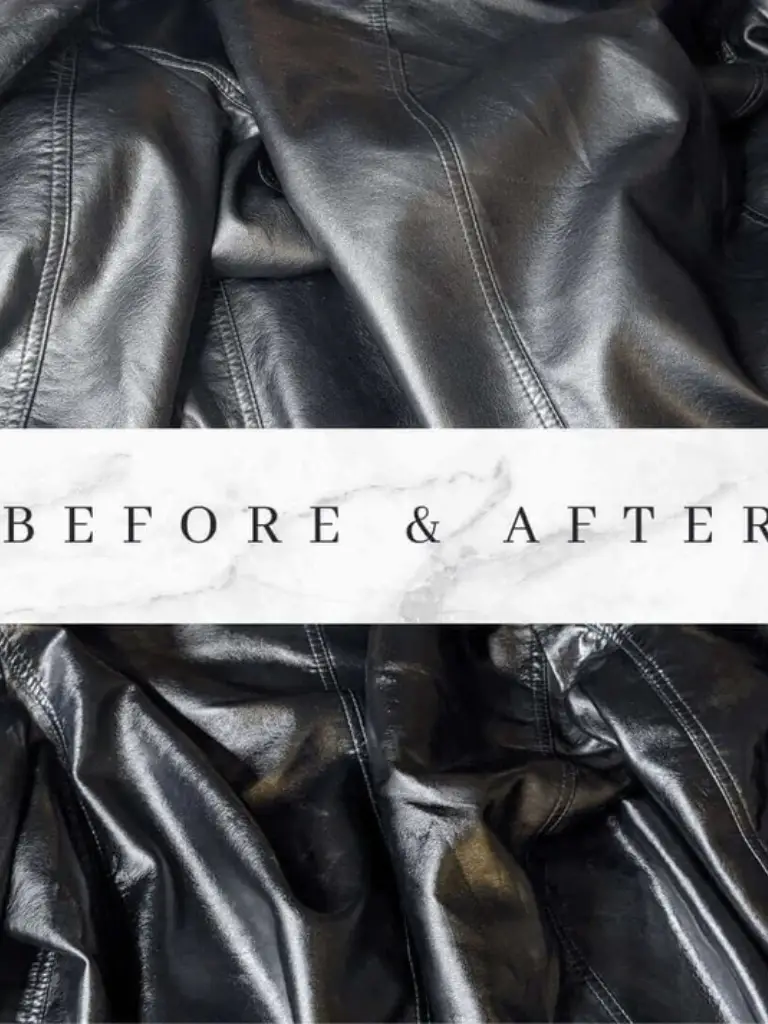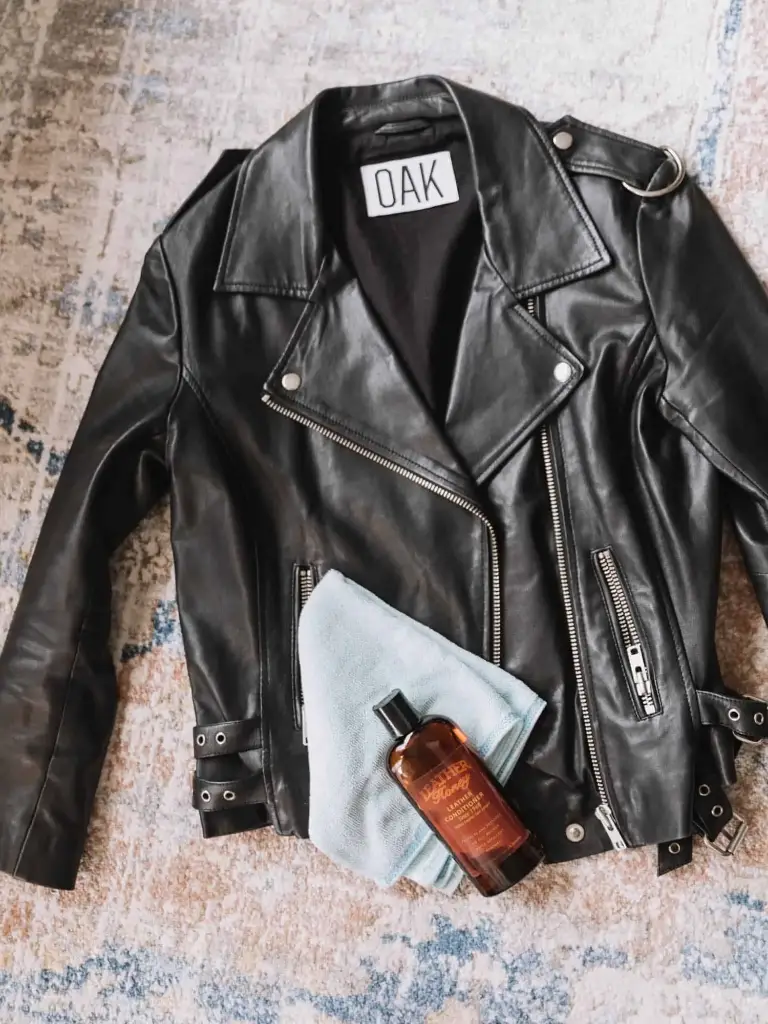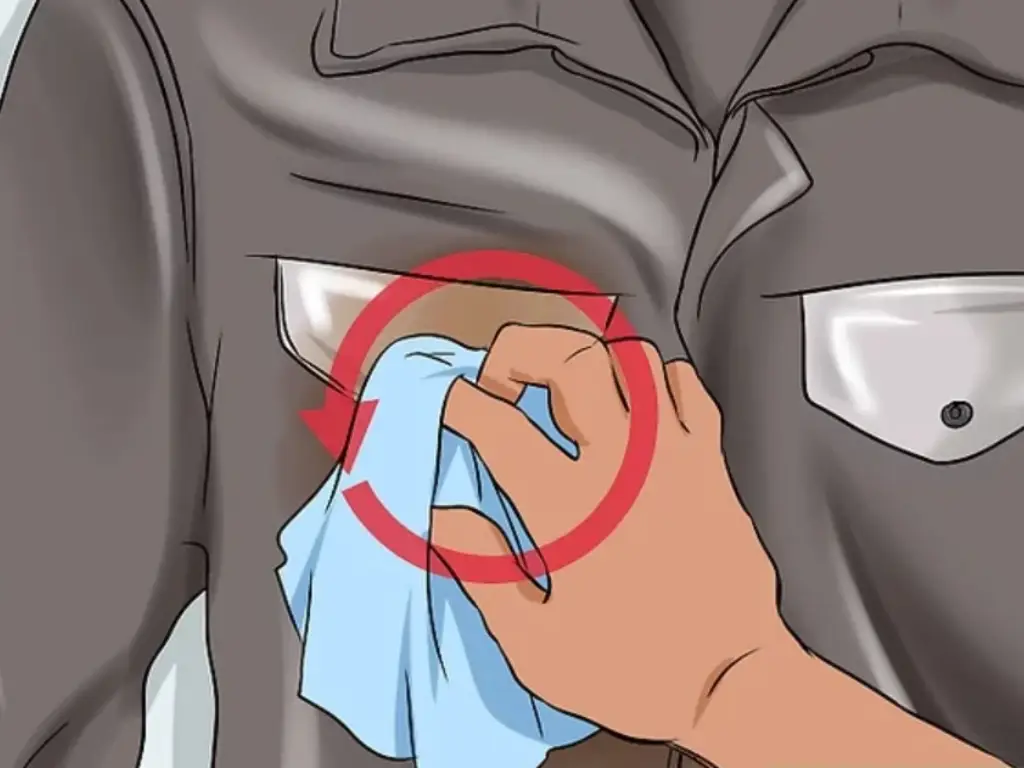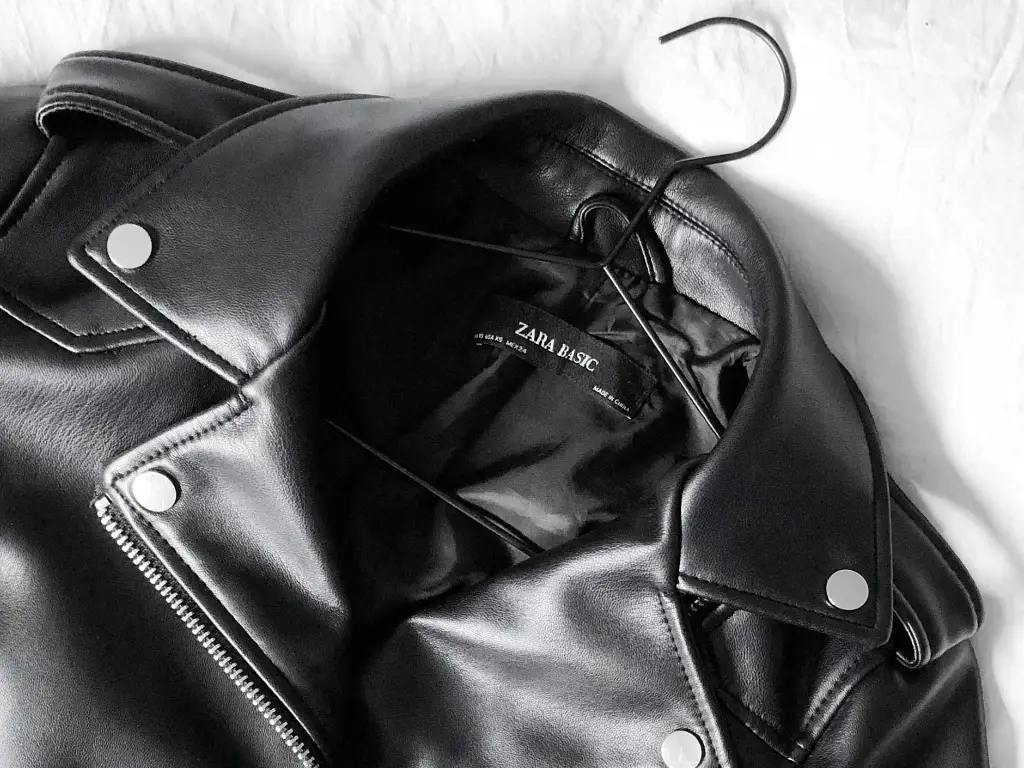Introduction
To keep your leather jacket looking luxurious and durable, you should take care of it. Irrespective of whether you have just bought a new one or want to give life to an old favourite, knowing the right way to clean and maintain is important. The guide will take you through how to wash and care for your leather jacket, including using leather care products such as sprays, waxes, and conditioners, thus helping you preserve its standard as well expand its lifespan.

Table of Contents
Understanding Different : Which Types of Leather Can You Wash?
Prior to initiating the cleaning process of your leather jacket, it is imperative to ascertain the types of leather that can endure cleaning without damage. Typically, jackets crafted from full-grain and top-grain leather are robust enough to tolerate gentle cleansing techniques. Full-grain leather, celebrated for its resilience, can be meticulously cleaned using mild detergents and softly wiped with a plush cloth to preserve its integrity. Conversely, top-grain leather, which undergoes a more extensive treatment process than full-grain, similarly benefits from subdued cleaning methods that safeguard its lustrous finish and texture. However, if your jacket is made of faux leather or another type of leather, it is important to use different cleaning solutions and methods, such as a small amount of leather cleaner, to avoid damaging the material.
In contrast, suede leather demands a distinctly nuanced approach due to its fragile nature. It is advisable to avoid water exposure when cleaning suede jackets, as it can lead to irreparable harm and discoloration. Employing a suede-specific brush or eraser to delicately eliminate dirt and blemishes is recommended. Regular brushing is essential to maintain suede’s signature soft and velvety texture without detracting from its aesthetic appeal.
Irrespective of your jacket’s leather type, it is crucial to utilize only gentle cleaning products and methods to prevent any potential damage to the leather. The use of harsh chemicals, such as bleach or ammonia, or abrasive cleaning techniques can remove essential natural oils, leading to cracking or discoloration. It is recommended to conduct a preliminary test with any cleaning agent on a discreet section of the jacket to verify its compatibility with the leather.
Tips:
Additionally, thorough examination of the manufacturer’s care instructions, typically found on the jacket’s label, is advised before cleaning. These instructions offer specific guidance on the appropriate methods for maintaining your jacket, tailored to its particular type and finish. If you are unsure about how to clean your leather jacket, it is always best to seek the help of a professional leather cleaning expert or qualified dry cleaner.
However, if you choose to clean your jacket at home, it is important to remember to avoid direct heat, which can damage leather, especially if it was previously moisturized.
| Leather Type | Washability | Cleaning Method |
| Full-Grain | Can be washed | Use mild detergents and gently wipe with a soft cloth. |
| Top-Grain | Can be washed | Requires gentle cleaning to preserve its finish and texture. |
| Suede | Requires special care | Avoid water exposure. Use a suede-specific brush or eraser to delicately remove dirt and stains. Regular brushing is essential. |
By comprehensively understanding the distinct properties of various leather types and adhering to recommended gentle cleaning practices, you are well-equipped to maintain the aesthetic allure and durability of your leather jacket for an extended period.
Choosing the Right Cleaning Products for Leather Jackets
Selecting the appropriate cleaning products and tools is indispensable for the meticulous care and maintenance of your leather jacket. Here are the essential implements and supplies you will require:
- Soft Brush
- Lint-free Towels
- Lukewarm Water
- Specialized Leather Cleaner
- Soft Cloth or Sponge
- Vinegar Solution: In case of more stubborn stains such as food spills or dye marks, make a mixture of equal parts vinegar and water then apply them. Oils and tough stains can be broken by vinegar.
- Upholstery Wax: Choose wax specifically made for leather to improve its luster and avoid dryness. To achieve better results, put small quantity of wax on a piece of cloth then use gentle strokes when buffing.
- Toothpaste or Starch: Another option is to use cornstarch, which can also absorb grease and lift it from the leather surface. For tougher stains, use a clean, moist cloth to blot away the stain after applying the cleaning product.
- Leather Conditioner: It is recommended that after cleaning, you use some sort of conditioner for this type jacket because it will help moisturize as well restore back its natural oils too. Select conditioners suitable for different kinds of leather, thereby preserving their suppleness flexibility respectively.
- Lint Roller: Use lint roller to get rid any lint dust pet hairs stuck onto your favorite jacket. But do it with caution in order not to tear any fibers of leather.
With these implements and supplies, you will effectively clean your jacket completely ensuring that it remains good looking for a long time while still being useful to you.

Precautions Before You Start Cleaning
Before commencing the cleaning of your leather jacket, it is crucial to implement several preparatory steps to safeguard the material and ensure effective cleaning:
- Remove Dust and Debris: Start the cleaning process by gently brushing off any visible dust and debris from your jacket’s surface using a mild brush or lint-free cloth. This step is meant to prevent the particles from going deeper into the leather during further stages of cleaning.
- Check Care Labels: It is very important that you check for care labels on your leather jacket before cleaning. These are important because they provide instructions as to proper methods of cleaning such as whether it can be washed or requires professional dry-cleaning among others. Additionally, the label will specify any necessary precautions regarding maintaining of leather finish and structural integrity.
- Perform Spot Test: Before applying any cleaner or solution on your whole leather jacket, it should undergo a spot test in an obscure area which proves its safety. Put small amount of this cleaner in that area and rub it gently with cloth looking for any discoloration or harm. This test is important in ascertaining whether the cleaner matches with the leather.
- Use Gentle Techniques: Due to its delicate nature, gentle non-abrasive techniques should be used when cleaning leather so as not to cause scratches on the surface or strip oils away from it. Mild cleansers specifically designed for use with leather should be chosen, while wiping movements should be gentle enough to retain their softness and pliability.
- Protect Hardware: When dealing with jackets that have metallic hardware like zippers or buttons. They should be protected well during their washing process.. Keep these parts away from contact with water or detergent solutions so that no corrosion occurs due to atmospheric moisture.
- Allow for Air Circulation: Place your cleaned out leather jacket in a well-ventilated place where air can easily flow around it for natural drying process to occur.. This is because drying them under heat sources like hair dryer or direct sunlight may cause cracks and make the leather to become dry and brittle.
Adhering to these guidelines before and during the cleaning of your leather jacket will facilitate a more effective cleaning process while minimizing the risk of damage to the jacket.
How to Wash Leather Jackets?
For routine cleaning of leather jackets that are worn daily and exhibit no significant stains, follow these basic cleaning procedures to maintain their appearance and longevity:
Gentle Cleaning with a Soft Sponge
- Prepare the Sponge: Begin by dampening a soft sponge in a mild soap solution until it is moist but not excessively wet.
- Spot Test: Conduct a spot test on a discreet area of the jacket to ensure the cleaning solution does not cause discoloration or damage.
- Cleaning Motion: Gently wipe the leather using smooth, circular motions. Focus on cleaning one section at a time to ensure thorough and even coverage.
- Apply Light Pressure: Use light pressure during cleaning to avoid saturating the leather or causing undue stress that could lead to damage.
- Rinse Sponge: Regularly rinse the sponge to eliminate dirt and debris accumulation, preventing any potential scratching of the leather.
- Address Crevices: Pay meticulous attention to crevices and folds, common areas where dirt accumulates.
- Protect Hardware: Exercise caution around areas with zippers, buttons, and other hardware to avoid causing scratches.
Wiping Down the Jacket
- Rinse or Replace Sponge/Cloth: After the initial clean, thoroughly rinse the sponge or switch to a fresh, clean cloth, dampening it slightly with clean water.
- Remove Residues: Carefully wipe over the entire leather surface with smooth, even strokes to remove any remaining soap and dirt, paying special attention to seams and crevices where residues may linger.
- Handle Hardware with Care: For areas incorporating hardware, use a dry cloth to avoid moisture buildup which could lead to rusting.
- Dry the Jacket: Immediately following the wipe down, gently blot the leather with a dry towel to absorb excess moisture.
By adhering to these steps, you can effectively clean your leather jacket, enhancing its durability and preserving its timeless appeal. Always prioritize gentle cleaning methods and steer clear of harsh chemicals to maintain the natural beauty of leather.

How to Clean Leather Jacket Lining?
To maintain its hygiene and freshness, cleaning the interior lining of your leather jacket becomes a must especially since after sometimes it is used, sweat, dirt and other odours may accumulate. Below are some step by step guidelines on how to clean the lining of your leather jacket:
Prepare the Jacket
- Reverse your coat inside out and lay it flat with its inner side facing upwards.
Clean the Lining
- Take a soft lint-free cloth that has been slightly moistened with mild cleansing solution and gently wipe over the lining. The fabric should be only slightly wet in order to keep from soaking it but enough to clean sufficiently.
- When you do this, you should gently press on instead of doing vigorous rubs which can damage the material.
Rinse the Lining
- After cleaning, take another soft cloth dampened with clean water to rinse off any residue of detergent or cleaner. This procedure is vital because it will eliminate all traces of detergents from sticking onto your skin or causing damage on fabric.
Dealing with Odors
- Sprinkle little baking soda all through the inside areas for few hours. Baking soda absorbs odors excellently. After that specified time period for baking soda being left in contact with linings, vacuum up or brush off thoroughly but softly.
- Hang your jacket in well-ventilated areas like outdoor locations. However, make sure it is not under direct sunlight as this may lead to damage to your leather. Air circulation helps remove remaining smells naturally.
These steps will help you properly clean out the lining in order to keep them fresh without stenches. It’s important to care for what’s on the inside just as much as how one treats outside when taking care of their jacket so that it lasts longer and still looks good even after years.
Cleaning Specific Stains on Leather Jackets
For maintaining the pristine condition of your leather jacket, effectively addressing various types of stains is essential. Here’s a detailed guide on how to handle food, makeup, and beverage stains on leather:
Food Stains
- As quickly as possible, utilize a dry and clean cloth to blot extra food in order to take out as much wetness as attainable without rubbing the stain on the leather.
- Make a mild soap solution with lukewarm water and gentle soap for leather.
- Take a soft cloth, damp it lightly with soapy water, and gently rub the stained area in circular motions that will lift it away from surface of fabric.
- Another piece of cloth should be used to rinse off all traces of soap. The region needs to be dried using towels or left to air by itself.
Makeup Stains
- Immediately remove any excess makeup by dabbing at it with tissue or paper towel.
- A simple leather cleaner or diluted vinegar solution (water + vinegar = 1:1) should be applied through a soft piece of cloth. Gently, yet quickly apply this product on top of the blemish avoiding, rubbing which usually broadens discolorations or destroys treated skin.
- Keep drying until the point where stain is removed. Leather like material which covers them requires a lot care such it mustn’t be disturbed.
- Keep drying until the point where stain is removed. Leather like material which covers them requires a lot care such it mustn’t be disturbed.
Beverage Stains
- Apply blotting method immediately onto such spillage using slightly moistened piece of dry clothing used to absorb as much content as possible.
- Mix detergent with water to form a cleaning solution. Dip into this solution a piece of soft cloth before gently touching your spot avoiding rubbing movements.
- After treating the stain, use another damp clean cloth to rinse up anything left behind by cleanser. Lastly dry using towel completely.
Maintaining Your Leather Jacket

Maintaining your leather jacket is key to preserving its quality and appearance for years. Here’s a comprehensive guide on how to care for it properly.
Using Leather Conditioner
- Choose the Right Conditioner
- Application: Use a soft cloth to apply conditioner equally onto the surface of the leather. Make sure that it achieves evenness across without shellacking.
- Absorption: Let the conditioner get absorbed into the leather as directed by its manufacturer, most times by leaving it for some time before cleaning off any remaining amount.
Methods for Hanging Your Jacket
- Wide, Padded Hangers: They are perfect for supporting the jacket weight uniformly thereby preventing shoulder area stretching or deformation.
- Avoid Hooks: Avoid hanging it on hooks because this will put pressure on one localized area causing misshaping of shoulders resulting into permanent creases.
Daily Wear Tips
- Weather Protection: Leather jackets can be protected from rain and moisture by applying water repellent spray that is specifically designed for leather. This way it will not get stained with water or damaged due to leather.
- Avoid Overexposure: Direct sunlight and sources of heat should be avoided as this may make the leather fade and dry out.
- Proper Storage: For the time that you are not using your jacket, you need to keep it in a cool dry place. It can also be wrapped up in a breathable garment bag so that dust does not get in contact with it while ensuring that it remains free from humidity and potential growth of mildew. Make sure to pay close attention to the cuffs, collars, and underarms when cleaning the inside of the jacket.
These maintenance practices, if followed, will ensure that your jacket remains elastic as well as trendy hence increasing its durability for long-lasting purposes.
Conclusion
Leather jacket care is not really tough as long as one adheres to the procedures that are given in this piece of writing. This would leave your leather jacket looking clean and lasting longer than before. Remember. Wash lightly, proper solution for cleaning leather only, hang your leather in a good way, so forth.
